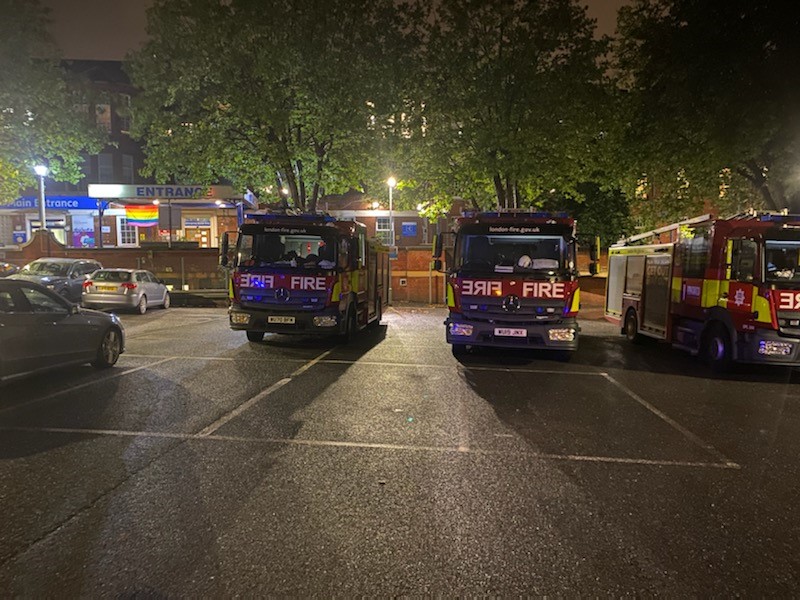Less than two weeks after heavy downpours saw roads and homes flooded in northwest and southwest London, London Fire Brigade’s 999 Control Officers took more than 1,000 calls during the capital’s second bout of widespread flooding on Sunday.
Firefighters attended hundreds of incidents after flood water affected areas such as Kingston, Redbridge, and Leytonstone. These included rescuing people stranded in cars, basement floodings and reports of ceilings collapsing.
In Worcester Park, firefighters rescued three adults and two children who were trapped after their car became stuck in one metre of flood water under the railway bridge.
Station Officer Andrew Cuthbert, who was at the scene, said: “When we arrived, there were two cars in the water. One car was already submerged, and another car had broken down in the water with a family inside.
“The sheer volume of water meant that it was also coming up through the drains and sewers and our rescue team wearing dry suits used an inflatable rescue boat to bring them to safety from the window of the car.
“Thankfully, no one was hurt, but these types of incidents can be avoided if people familiarise themselves with what to do if you’re caught in a flood.
“After rescuing the family from the car, we also had to speak to local people playing and even kayaking in the flood water. Hidden hazards beneath the surface and contaminated water can make driving or walking through flood waters very dangerous. We were seeing drain covers being lifted by the water, which could not only cause cars to become stuck, but could also seriously injure people walking through. If you’re unsure about the depth of the water, look for landmarks as to where the water has come up to. If you can’t see the pavement, don’t risk it.”
Firefighters also worked closely with partners at two significant incidents in east London. Crews attended Charlie Brown’s roundabout in South Woodford after multiple cars became stranded when the roadway flooded. Crews used specialist high volume pumping units to remove flood water and make the scene safe. Firefighters also supported partners at Whipps Cross Hospital throughout the night after flooding affected several hospital wards. Crews assisted medical teams with safely moving patients to be relocated and helped to recover operations by removing flood water from the basement which had reached a depth of three feet.

Deputy Assistant Commissioner Spencer Sutcliff said: “It’s been a busy two weeks for firefighters and our Control Officers who have been working incredibly hard with our partners to help keep Londoners safe at flooding incidents, alongside three significant fires which occurred at the same time.
“Control staff introduced batch mobilising to certain incidents, prioritising calls where there was a risk to life and attending other calls as non-emergencies.
“We know this is a particularly difficult time for those whose homes have been damaged by the floods, but with future flooding to be expected, we are urging people to familiarise themselves with what to do to prepare and how to respond if you’re affected by flooding.
“Pay attention to weather alerts and prepare a flood kit or grab bag. It’s important to always put people before belongings, but, if possible, you can also use sandbags to limit water flow and move belongings to a higher level. Make sure you also look out for your neighbours, especially if they are vulnerable.”
As many continue to clear up in the aftermath, the Brigade is warning to take extra care due to an increased risk of carbon monoxide poisoning from generators used to dry out buildings. Never run a petrol or diesel-powered generator indoors and be aware of the signs of carbon monoxide poisoning.
More information on recovering from a flood is available from the UK Government and local authorities can be contacted for advice and support.